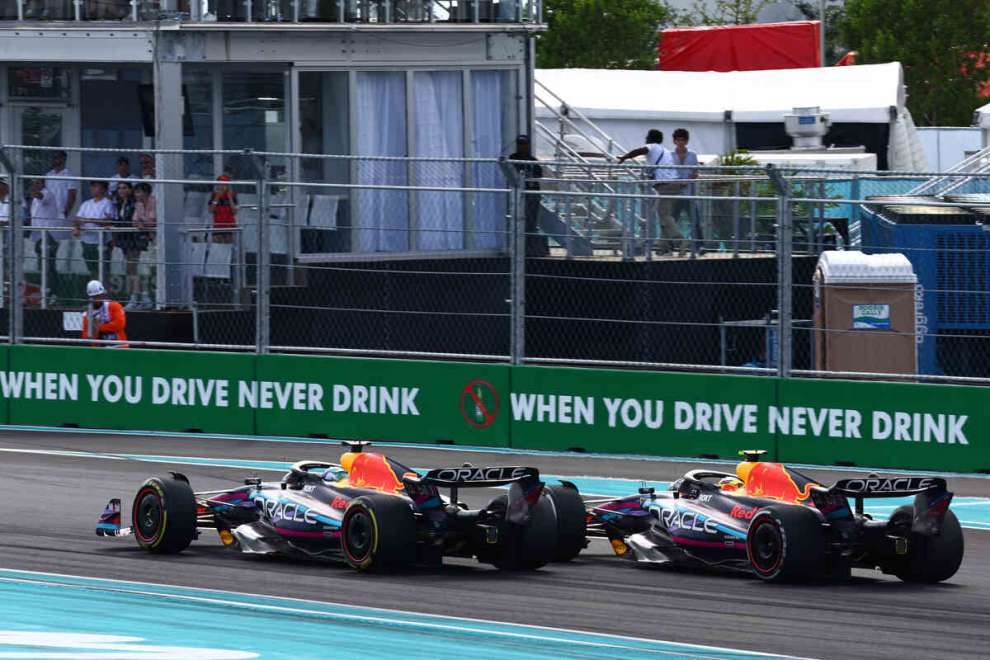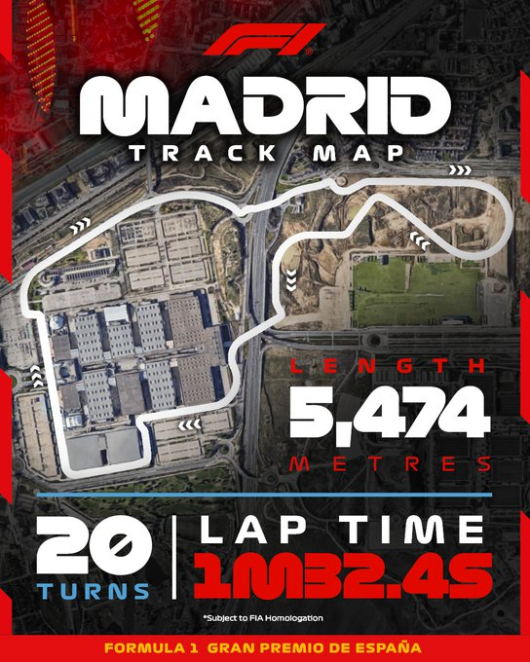By Carlo Platella
It's official: from 2026 Formula 1 will return to Madrid. It is a Circus increasingly aimed at cities, almost a return to the origins for a sport whose first competitions were held on public roads. Calendar urbanization has his most important drive is marketingbut indirectly it could benefit the spectacle of a category whose championships are often monothematic.
The loss of the great classics
In 2014, Formula 1 had 5 street circuits out of 19, equal to just over a quarter of the calendar: Melbourne, Monaco, Sochi, Montreal and Singapore. Ten years later the Russian stage is absent, however more than compensated for by the arrival of Baku, Jeddah, Miami and Las Vegas. In 2024 8 out of 24 tracks will be city tracks, exactly one third of the total, to which Madrid will be added in 2026. All without ignoring the rumors of the possible organization of Grands Prix in New York and Osaka, the interest shown by Nice and the failure to hold the event in Hanoi, when everything was already ready in Vietnam.
The popularity of street circuits is to the detriment of the more historic tracks, located mainly in Europe. Enthusiasts don't just miss tradition, which, although it needs to be preserved and cultivated, alone is never a valid justification for not imagining a different future. The impoverishment lies rather in the fact that the permanent facilities remain those where one can best appreciate Formula 1 in action. The aerodynamic grandeur of modern single-seaters requires appropriate spacessomething that Formula 1 seems to be taking into consideration, with the planning of new city circuits on still buildable land.
Formula 1-Formula E: reverse route
With the inclusion of new urban routes in the calendar, Formula 1 follows Formula E's lead, which has made its identity out of city racing, in turn drawing inspiration from IndyCar. Over the years, Formula E has followed a reverse path, moving away from city contexts, a choice whose reasons are partly technical. In fact, to increase its popularity, in the future the electric championship aims to churn out increasingly high-performance cars, requiring larger spaces to discharge their growing power to the ground.
Formula 1, on the other hand, is preparing for the opposite technical evolution. Electric power will triple in 2026, with cars starving for energy, requiring short straights and recurring braking to avoid draining battery power. Yet, the generation of modern street circuits responds to anything but these characteristics, with the super-fast Jeddah with an average speed of over 250 km/h and the endless straights of Las Vegas and Baku. Madrid's new facility, the first citywide to be announced following the publication of the 2026 regulations, is slightly more tortuous than its peers. In this sense, running in the city is an opportunity to hide the feared shortcomings of the next power unitsalthough not constituting the main motivation.
Business opportunities
If Formula 1 turns its gaze to cities, the reason is the same that originally guided Formula E. Bringing the spectacle directly to fans rather than the other way around helps to attract the curious and spread the sport's popularity, an ambition to which Formula 1 places no limits. Even more, however, the walls close to the road, the overpasses and the urban buildings themselves offer greater visibility to commercial partners. Last but not least there is the glamor factor, attracting wealthy guests with income and visibility, to which is added the scenographic aspect, with the city profiles and artificial lights which increase the attractiveness of the television product.

If the Circus can afford all this that is thanks to economic strength that he enjoys in this historical moment. For local residents, a street circuit is above all a nuisance, with the closure of public roads, noise and changes to the urban context. Organizing similar events is not without risks in terms of popularity for political forces, as seen with the protests in Las Vegas. Something that Formula E itself discovered at its own expense, clashing with the about-faces of several host cities, including Rome, and seeking greater stability in the permanent racetracks. However, the popularity of Formula 1 is such that it overcomes even these complaints, with a strong economic justification that represents further evidence of the current health of the Circus.
Hybrid tracks
The average fan, for his part, cares little about commercial logic that is increasingly distant from his own. Instead, he is concerned that Madrid's entry puts the permanence of Barcelona in the balance, whose recent elimination of the final chicane had restored its original, particularly appreciated design. On the other hand, the positive feedback from the migration to the city is that Formula 1 seems to have learned from the mistakes of the past. No more locations with rigid constraints on the design of the track, such as the buildings of the Olympic park in Sochi, identifying instead clear land, as done with Miami, Jeddah and with the failed Hanoi project. The same will happen in Madrid, where Jarno Zaffelli has already promised the creation of curves with banking, having more fun than was done in Miami.

This does not mean that the calendar is full of 90° corners, not ideal for a Formula 1 that will continue to focus on ground effect, with cars that are stiff and not very agile at slow speeds. All of this changes the overall spectrum of the tracks in the championship. A demonstration of this is the fact that five years ago the teams considered Budapest a low-speed circuit, now considering it a medium-distance one. The evolution of the slopes modifies the usage profiles of the vehiclespushing the teams to question themselves on the winning objectives to set in the design phase.
A more varied calendar
The positive side of the urbanization of Formula 1 is diversification of the calendar. If ten years ago Barcelona was considered the most representative track, this is no longer so, as it is impossible to include the current variety of circuits in a single facility. Nowadays it is common to switch from maximum to minimum downforce configurations, while the slow corners balance the high-speed corners, once predominant on the calendar. Aerodynamic load and efficiency are still highly appreciated qualities, but over the course of a championship they are no longer the masters.
The mix of urban and permanent facilities diversifies the calendar, indirectly benefiting the show. Verstappen's dominance in 2023 is something that is unprecedented and perhaps will not even have equals in the history of Formula 1. Behind the world champion, on the other hand, he witnessed thealternating between Mercedes, Ferrari, McLaren and Aston Martin, depending on the affinities of the cars with different types of tracks. It is no coincidence that the idea of the “concept” of a car, the identity to be given to the car, is recurring.

In an increasingly varied calendar, there is no rewarding feature on each circuit, but those who design are called upon to choose which aspects of performance to focus on, which types of curves and slopes to favor. All this increases the probability that the same alternation seen in 2023 among the pursuers will occur in the top positions. The proliferation of street circuits takes away space from the great Formula 1 classics, while on the other hand outlining a mix that could contribute to giving more colorful championships compared to the solo ones of recent years. An ambitious goal, which to be achieved will require the support of an adequate technical, sporting and financial structure.
#Formula #town #scenarios #slow #transformation